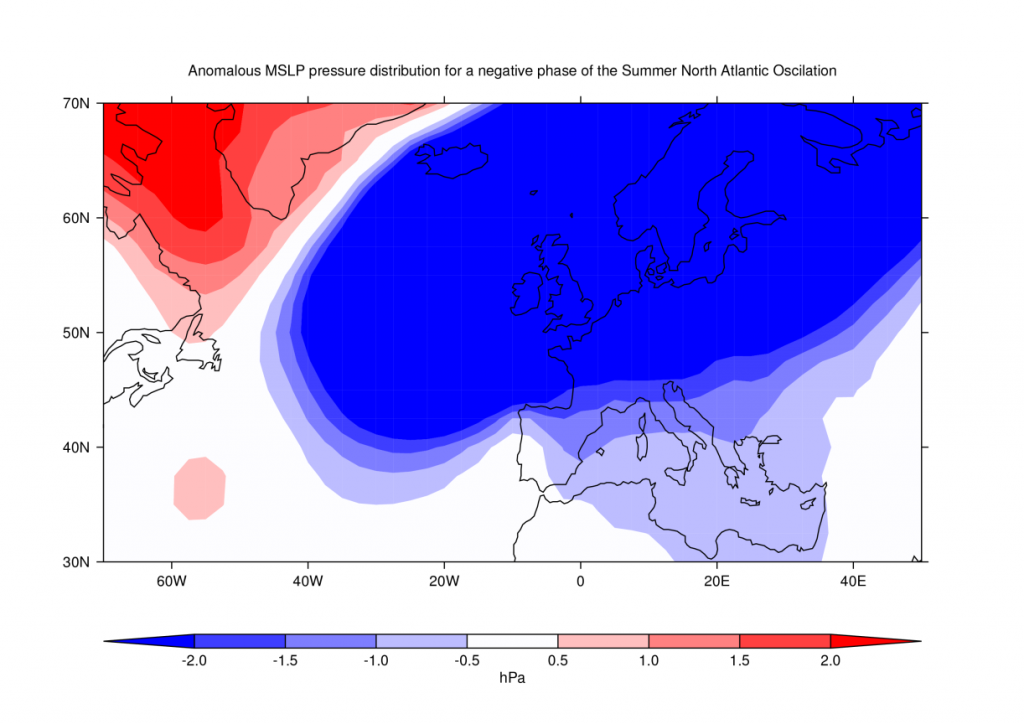By Ruth Petrie
Dramatic declines in Arctic sea ice have been observed over the past few decades. In the 1980s it was typical that at the September minimum there would be between 6.5 and 8 million km2 of sea ice; typical values in the current decade are in the range between 3.5 and 5.5 million km2 (see Figure 1). It is predicted that Arctic sea ice will continue to decline over this decade with the increase in global temperatures (Stroeve, 2012). While this large decline in Arctic sea ice cover has and will continue to have an impact on the Arctic climate, one question that has been the subject of much research is whether the declines in Arctic sea ice could affect the weather and climate of the mid-latitudes through changes in the large-scale global circulation.
Figure 1. Arctic sea ice cover in 1984 (left) and 2012 (right). Image courtesy of NASA
In order to understand how changes in the Arctic may impact the large-scale circulation, global climate model simulations of Arctic sea ice loss have been performed at the University of Reading as part of The Environment of the Arctic – Climate, Ocean and Sea Ice (TEA-COSI) project. One of the key results of this work has indicated that summer may be a season in which declines in Arctic sea ice could affect the weather and climate of north-western Europe.
The average synoptic conditions over north-western Europe are often described in terms of the Summer North Atlantic Oscillation (SNAO; Folland, 2009). In a study by Petrie et. al. (2015) it was found that declines in Arctic sea ice are associated with a negative phase of the SNAO (see Figure 2). A negative phase of the SNAO implies that the UK and north-western Europe are more likely to experience anomalously low pressures; in summer this implies cooler and wetter than average conditions.
Figure 2. The Mean Sea Level Pressure (MSLP) anomaly distribution for a negative of phase of the Summer North Atlantic Oscillation. Calculated as described by Folland (2009).
Sea ice in the Labrador Sea and Hudson Bay (which can be south of 60°N) melts during the spring and early summer. This exposes the ocean surface, which absorbs solar radiation, and this in turn warms the atmosphere above. This anomalous warming can penetrate deep into the troposphere, as unlike in the central Arctic the boundary layer is weaker and higher. This warming weakens the equator to pole temperature gradient and therefore weakens the prevailing westerlies, and the jet stream shifts southwards. The result of this is anomalously cooler and wetter conditions over north-western Europe. The most recent research in this area has suggested that this is most likely to occur in early summer.
These experimental results suggest Arctic sea ice loss can affect the weather over north-western Europe through changes in the large-scale circulation, however the circulation changes are relatively small compared with the long-term average. Therefore other sources of variability such as varying sea surface temperatures in the North Atlantic likely play a more dominant role in determining European summertime variability.
References
Folland, C.K., Knight, J. R., Linderholm H.W., Fereday D., Ineson, S and Hurrel, J. W., 2009. The summer North Atlantic Oscillation, past, present and future. J. Clim, 22, 1082-1103
Petrie, R. E., Shaffrey, L. C. and Sutton, R. T., 2015. Atmospheric response in summer linked to recent Arctic sea ice loss. Q. J. R. Meteorol. Soc., doi: 10.1002/qj.2502
Stroeve, J. C., 2012. The Arctic’s rapidly shrinking sea ice cover: a research synthesis. Climatic Change, 110, 1005-1027.


